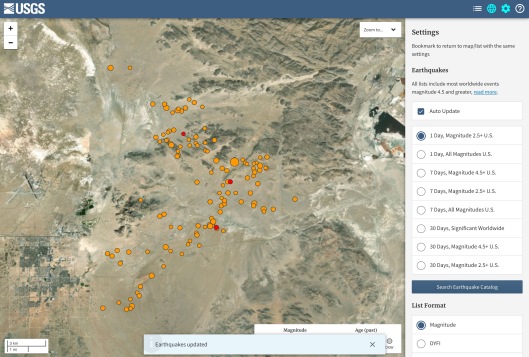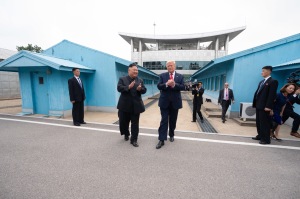Tags
4th of July, Betatron radiography system, BLU-116, boroscopes, California, California earthquakes, China Lake North Ranges, China Lake Propulsion Labs, CLPL, combusion instability test apparatus, combustion, CT-1, CT-4, DoD, double rocket propulsion, experimental systems, Fat Man, fires July 4th earthquake, free-fall weapons, fuzing systems, guided missiles, Hellfire thermobaric warhead, High Energy Computed Tomography system, high strain, IEDs, improvised explosive devices, India, Inyokern, Jammer Effectiveness Devices, JED, July 4th earthquake injuries, LCDB, low collateral damage bomb, M 6.4 depth 8.7 km 12 km SW Searles Valley, Manhattan project, Mark 12, Mark 4, Mark 5, mining, Naval Ordnance Test Station, non-nuclear explosive components nuclear weapons, NOTS, nuclear bombs, ordnance, Project Camel, propulsion, Propulsion Research Lab, Ridgecrest, risky systems, rockets, Salt Wells Area In-Service Engineering Facility, Salt Wells Pilot Plant, Searles Valley, Searles Valley Minerals, testing, Trump 4th of July parade, warfrighter, weapons systems, WMD
 “M 6.4 – 12km SW of Searles Valley, CA 2019-07-04 17:33:49 (UTC)35.705°N 117.506°W 10.7 km depth”
“M 6.4 – 12km SW of Searles Valley, CA 2019-07-04 17:33:49 (UTC)35.705°N 117.506°W 10.7 km depth”
https://earthquake.usgs.gov/earthquakes/eventpage/ci38443607/executive
“M 4.6 – 7km ESE of Ridgecrest, CA 2019-07-04 18:39:44 (UTC)35.601°N 117.597°W 2.8 km depth” https://earthquake.usgs.gov/earthquakes/eventpage/ci38443607/executive
Update note: CalTech has the M 6.4 earthquake as more shallow (8.7 km) than the USGS. According to CalTech: “04 Jul 2019 10:33:48 PDT, (35.705, -117.508), depth 8.7km; 12km SW of Searles Valley, California” CalTech also says that since records began in 1932 there have been 31 events of M4 or greater within 10km of the July 4th 2019 earthquake. The largest prior to the 4th was M5.8 on 1995/09/20, and the most recent was M4.1 on 01 Nov 2011. The article written by Dr. Jennifer Andrews provides the following info on faults: “Faults: CFM fault associations: most likely Not associated with a CFM modeled fault (99%). Alternates: Little Lake fault (1%). Nearby faults: Little Lake fault zone (0.9 km) and Wilson Canyon fault (14.6 km).**“. The entire article, including how they arrived at the last conclusions, can be found here: https://archive.li/http://www.scsn.org/index.php/2019/07/04/07-04-2019-m6-4-near-searles-valley/
“A magnitude-6.4 earthquake rocked southern California on Thursday morning, jolting residents of the region and resulting in several fires and minor injuries in the town of Ridgecrest, 180 kilometers (112 miles) northeast of Los Angeles. Aftershocks continue to shake the region. Thousands were left without power near the epicenter after the quake struck at 10:33 a.m. local time, and one home was partly consumed by flames. “We’ve had multiple injuries,” Kern County Fire Chief David Witt told reporters. “We’ve had two house fires. We’ve had small vegetation fires, power lines down, gas leaks, the associated events that take place after you have a large earthquake.” Patients were evacuated from the local hospital, but its emergency room stayed open. Seismologists say the seismic rupture occurred just 9 kilometers beneath the Earth’s surface, which amplified its effect.” (VOA News-Mike O’Sullivan, 4 July 2019)
Is this a mining or military facility near the epicenter of the largest quake?

There is a mining company in the area to the east, which is now a subsidary of a company in India. https://en.wikipedia.org/wiki/Searles_Valley_Minerals However, the second major earthquake places the event more close to the China Lake Propulsion Labs, as do the minor ones.

If manmade, the M 6.4 would have to be a major blast-underground collapse, well beyond a routine underground mine collapse explosion. And, well beyond routine military testing. Trump’s North Korean friend, made such an earthquake with a nuclear weapon: https://en.wikipedia.org/wiki/2017_North_Korean_nuclear_test
Since Manhattan Project production-testing (supposedly only the nonradioactive parts) was undertaken in the area, there is almost certainly a network of underground tunnels. There may be old mining tunnels, as well. And, the two may be the same.
China Lake Naval Test Range video screenshots-link https://youtu.be/mWiSTeYUFt8


As of 2014:
“China Lake Propulsion Laboratories (CLPL)
Combustion Sciences Facilities; Ordnance, Propulsion, and Explosives Laboratories; Pearson Laboratory; Salt Wells Facilities
Mission.
Navy’s most comprehensive and unique center for RDAT&E of the energetic components of rockets, guided missiles, and free-fall weapons. Provide warfighters with state-of-the-art propulsion, ordnance, and fuzing systems using both in-house and contracted efforts.
Unique Features.
The combination of ranges, the proximity of state-of-the-art laboratories, and the full life-cycle capability is unmatched in government and industry. Scientists and technicians can go from basic research of a new chemical to processing and testing merely by walking across the street in some instances. Mixing is conducted in sizes ranging from hand-held beakers up to 150 gallons of energetic materials.
Significant spacing between facilities enables the testing of extremely large, experimental, or risky systems.
The High Energy Computed Tomography system is unique within the DoD, and the Betatron radiography system is the only one of its kind in the world that is still functioning. The Propulsion Research Laboratory has the only functional combustion instability test apparatus.
Combat Support Examples.
A team of scientists, engineers, and technicians working with our industrial partners supported our warfighters by producing the Hellfire “Thermobaric” warhead along with the low rate initial production of BLU-116, the Low Collateral Damage Bomb (LCDB).
Highly trained specialists have refurbished fuzes for the warfighter, lent their expertise in battery technology and combustion instability, and investigated and solved failure issues in the field in real-time.
Researchers are continually sought by the warfighter for quick response development of critical warfighting devices like the Jammer Effectiveness Devices (JEDs) provided in recent conflicts to preserve life and equipment when dealing with the threats of improvised explosive devices (IEDs). Many tasks are on a quick-response basis, such as providing warfighters with data on 20-mm ammunition being used in the current conflict. For past conflict examples, see the “Historical Significance” section below.
RDT&E.

The CLPL area, also known as Salt Wells, is used for propulsion, warhead, and fuze testing. Propulsion
grain, nozzles, and actuators are designed here. Research is conducted for explosives and propellants.
Motors and warheads are processed and cast. Inspections are conducted using boroscopes as well as film and high energy computerized tomography radiography. The major test ranges are CT-1 (slow cookoff testing), CT-4 (fast cookoff testing), bullet impact, drop testing, fragment testing, T-Range (aero-heat / material testing), and Skytop (experimental to production static motor firings).
Services and support include inert and energetic materials characterizations at high strain rates, experimental design, ultra-high-speed photography, ordnance support and characterization, engineering and scientific analysis, spectroscopy (time resolved), and high velocity impacts. In 1994, China Lake became the tactical lead for a program to double rocket propulsion.
CLPL specialists are working on active fire-suppression systems in addition to conducting extensive work to make hypersonic weapons a reality.
By studying how materials burn, researchers are developing computation models to examine reaction kinetics and species development during rocket propulsion. Using models, new ingredients can be developed and effects probed during the conceptual and early development stages.
Size / Description / Location / Scope.
More than 380 employees work in more than 100 specialized labs and facilities that encompass an area of more than 7.5 square miles. Explosive T&E limits range from 200 to 500,000 pounds. This flexibility allows customers to go from concept development to full-scale prototype or to conduct research rarely available elsewhere. The area is located on China Lake’s North Ranges approximately ten miles from the main gate. Annual Test Events: 900-1000+. Year Opened: 1944. Replacement Cost: $250M+.
Main Facilities
Salt Wells Area In-Service Engineering Facility. This is a turn-key 10,000 SF facility for rapidly assembling and disassembling all-up-round weapon systems and small components. This facility is sited for 10,000 Net Explosive Weight (NEW) and has three secured bays.
Distribution Statement A. Approved for public release. NAWCWD PR 14-0100, Sept. 2014. http://web.archive.org/web/20160412033410/http://www.navair.navy.mil/nawcwd/command/ImgContent.aspx/LoadFileFromStore/156
Project Camel: https://www.osti.gov/includes/opennet/includes/MED_scans/Book%20VIII%20-%20Volume%203%20-%20Auxiliary%20Activities%20-%20Chapter%202%20-%20Pr.pdf
https://en.wikipedia.org/wiki/Project_Camel

“The Salt Wells Pilot Plant was a facility established by the Manhattan Project at the Naval Ordnance Test Station (NOTS) at Inyokern, California, where non-nuclear explosive components of nuclear weapons were manufactured. The first explosives were melted, mixed and poured on 25 July 1945. Between 1945 and 1954, it manufactured explosive components of the Fat Man, Mark 4, Mark 5 and Mark 12 nuclear bombs… The Salt Wells Pilot Plant closed on 30 June 1954.” It doesn’t sound like it closed for long, if you consider the 2014 description. See more here: https://en.wikipedia.org/wiki/Salt_Wells_Pilot_Plant

From VOA News:
“Strong Earthquake Shakes Southern California
By Mike O’Sullivan
July 4, 2019 02:22 PM
LOS ANGELES – Updated at 9:29 p.m., July 4.
A magnitude-6.4 earthquake rocked southern California on Thursday morning, jolting residents of the region and resulting in several fires and minor injuries in the town of Ridgecrest, 180 kilometers (112 miles) northeast of Los Angeles. Aftershocks continue to shake the region.
Thousands were left without power near the epicenter after the quake struck at 10:33 a.m. local time, and one home was partly consumed by flames.
“We’ve had multiple injuries,” Kern County Fire Chief David Witt told reporters. “We’ve had two house fires. We’ve had small vegetation fires, power lines down, gas leaks, the associated events that take place after you have a large earthquake.”
Patients were evacuated from the local hospital, but its emergency room stayed open.
Seismologists say the seismic rupture occurred just 9 kilometers beneath the Earth’s surface, which amplified its effect.
More than 100 aftershocks have shaken the region since the initial jolt. Experts say more are likely.
“There is about a 1-in-20 chance that this location will be having an even bigger earthquake within the few days,” said seismologist Lucy Jones of the U.S. Geological Survey in Pasadena, California.
President Donald Trump, about to participate in July 4th Independence Day celebrations in Washington, D.C., tweeted that the situation in California was under control.
This was the largest earthquake to strike Southern California in 20 years, but experts say a number of quakes of similar size typically occur there in every decade. The region has simply experienced a lull.
The most destructive in recent memory came in 1994, when a 6.7-magnitude temblor struck the Northridge neighborhood of Los Angeles, killing 57 people and causing billions of dollars in damage.
Thursday’s quake struck a thinly populated desert community, so the damage was limited, seismologist Jones said.” https://www.voanews.com/usa/strong-earthquake-shakes-southern-california
Coso Hot Springs-Geothermal is well to the NW of the epicenter site.
https://openei.org/wiki/Coso_Geothermal_Area
Trump and his nuke luvin North Korean friend. Were the major earthquakes a diversion from Trump’s 4th of July parade? Or was this the real-deal? Considering the track record of US nuclear testing, and of Trump, anything is possible.


You must be logged in to post a comment.